Please login or click here to join.
Forgot Password? Click Here to reset pasword
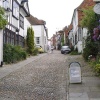 | 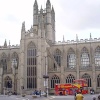 | 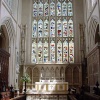 |  | 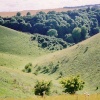 | 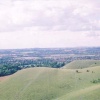 |
| Edward Lever Posts: 734 Joined: 22nd Dec 2005 Location: UK | quotePosted at 09:15 on 21st April 2012 I tried shooting RAW with my Canon EOS50D and I was initially disappointed that the RAW images looked 'soft' compared with the .jpg images from the camera. Now I realise, after reading more, that sharpening is applied in-camera to the .jpg files, so the un-processed RAW image often looks 'soft' compared with the .jpg out of the camera. Using the Canon software (Digital Photo Professional) that came with the camera allows much more precise sharpening of the RAW file than is done in-camera, and if applied with care, can produce superb images. Now I shoot in RAW all the time, with the camera set to simultaneously produce a small .jpg for easy indexing of thumbnails. If your camera is capable of saving RAW and .jpg simultaneously, this is a very useful way of working. Even though RAW processing using Canon DPP software is somewhat limited, I am an 'old school' photographer who tries to get it right first time so I don't need anything fancier.The other nice feature of Canon's DPP is that it allows 'tweaking' of lens aberrations for those Canon lenses which are on the list of supported lenses. Anyone else with experiences of using Canon DPP ?
Edited by: Edward Lever at:22nd April 2012 09:17 |
| lurkalot Posts: 24 Joined: 29th Dec 2008 Location: UK | quotePosted at 16:17 on 21st April 2012 On 21st April 2012 09:15, Edward Lever wrote:
|
| Edward Lever Posts: 734 Joined: 22nd Dec 2005 Location: UK | quotePosted at 19:14 on 21st April 2012 to Lurkalot, Perhaps I was not careful enough with my words....what I meant to say is that DPP doesn't have all the 'bells and whistles' of Photoshop, but for me this is an advantage (I am not into playing with layers etc). DPP suits my purposes fine, and it's good to know there is someone else who likes it. Certainly, it is capable of quite subtle tweaks in the conversion process. |
| Dave John Posts: 22335 Joined: 27th Feb 2011 Location: England | quotePosted at 20:30 on 21st April 2012 Like Edward I tend to set the camera up to shoot RAW and Jpeg. Takes up more space on the cards but gives a reasonable starting point for processing the RAW file for which I use Photoshop. As to viewing RAW files on the PC I prefer to use FASTSTONE IMAGE VIEWER a free download which gives full screen viewing of images and is quite a powerful programme also capable of a degree of processing. The rightclick context menu can be set up to open the required image directly into your chosen processing programme. |
| lurkalot Posts: 24 Joined: 29th Dec 2008 Location: UK | quotePosted at 23:32 on 21st April 2012 On 21st April 2012 19:14, Edward Lever wrote:
Like you said, it doesn't have the bells and whistles, but as a processor it's hard to beat, especially as it's a free bundled program. Most camera manufacturers make you pay for this stuff. ;) |
| Edward Lever Posts: 734 Joined: 22nd Dec 2005 Location: UK | quotePosted at 00:05 on 22nd April 2012 to Lurkalot, No offence was taken, and no apology was necessary.....I am always interested in other people's experiences of cameras, both the hardware and software. I use Canon mainly because I used Canon for film, and had a few Canon lenses before moving to digital. I am on a limited budget, so some of the other features of DPP like lens aberration correction enable me to get the best out of the cheaper lenses (I can only dream of using the Canon 'L' series lenses). And as you say, DPP is bundled free with many Canon cameras, a very nice gesture. |
| Sue H Posts: 8172 Joined: 29th Jun 2007 Location: USA | quotePosted at 04:43 on 22nd April 2012 I have just started shooting in RAW. I have no idea what I'm doing, and didn't know that I need to fiddle with the RAW pictures to bring out the best in the picture. I do shoot both RAW & JPEG now, and look forward to learning how to get the most out of RAW. |
| Edward Lever Posts: 734 Joined: 22nd Dec 2005 Location: UK | quotePosted at 08:54 on 22nd April 2012 to Sue, it's always good to experiment with RAW, but unless you have a specific idea of what you need from it (eg better control of sharpening or exposure compensation after you've taken the picture), you may find it is just a way of filling your memory card very quickly. Other posts on this thread have given plenty of advice on handling RAW, so I won't say much more, except to be aware that RAW file sizes are very big, which can be a problem if you are taking lots of travel pics. It's surprising how quickly your archive storage will get filled up if you shoot with RAW. As with any photo technique, the best way to learn is to experiment and decide what way of working suits you best, and see if RAW shooting gives you an advantage. PS. Using RAW is time-consuming, requiring later evaluation of every image. Personally, if I was taking loads of holiday pics, I would stick with using .jpg out of the camera, at the finest .jpg setting the camera is capable of.
Edited by: Edward Lever at:22nd April 2012 09:12 |
| Dave John Posts: 22335 Joined: 27th Feb 2011 Location: England | quotePosted at 08:57 on 22nd April 2012 Sue, Mick's explanation earlier on is about as good an uncomplicated explanation as i have ever seen, so go back and have a look at that. But think of RAW as the NEGATIVE that you would have taken on a FILM camera. Downloading to your PC is the equivalent of DEVELOPING the film. You then need to PROCESS the RAW files to get Jpeg's which equate to PRINTS. As your camera obviously has RAW ability you will have some form of software (think darkroom and chemicals) on the disc that is supplied in order to convert the RAW images. A RAW file holds a lot more information than an 'in camera' processed Jpeg. Also processing a RAW file is 'non-destructive' ie you keep the original RAW intact just as you would a negative. If you have the time RAW is definitely the way to go as the results you can acheive are way beyond camera produced Jpegs. And a with a traditional darkroom ...it's all down to trial and error, the main difference being you have no chemicals and paper to waste. So have acrack at it but above have fun with it. |
| Dave John Posts: 22335 Joined: 27th Feb 2011 Location: England | quotePosted at 09:26 on 22nd April 2012 Gotta agree with Edward there, my camera produces 20meg files when shooting in RAW and that is about 170 to a 4GB card and an awful lot of scrutinising of images afterwards. And depending where we go and what we end up doing I can quite easily finish the day with a couple of cards full. Your cards, which are resuable, are the equivalent of film so once you have your cards your 'film' expense is over and you therefore have the ability to 'overshoot' a subject which. within reason, is not a bad thing. So now that you have a good bit of help and advice it's up to you to experiment and work out what suits you best |